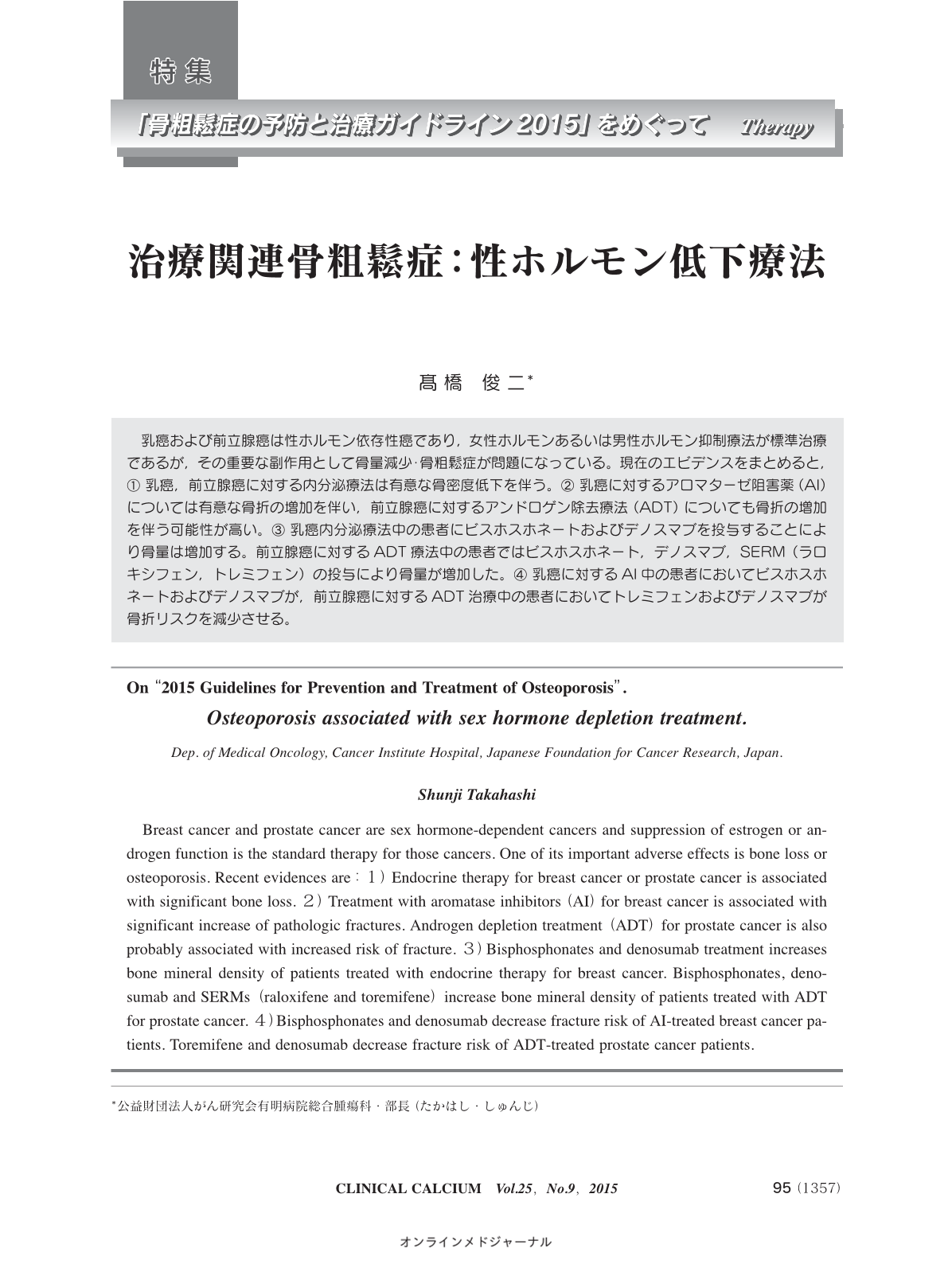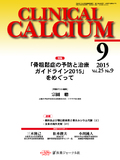Japanese
English
- 有料閲覧
- Abstract 文献概要
- 1ページ目 Look Inside
- 参考文献 Reference
乳癌および前立腺癌は性ホルモン依存性癌であり,女性ホルモンあるいは男性ホルモン抑制療法が標準治療であるが,その重要な副作用として骨量減少・骨粗鬆症が問題になっている。現在のエビデンスをまとめると,〈1〉 乳癌,前立腺癌に対する内分泌療法は有意な骨密度低下を伴う。〈2〉 乳癌に対するアロマターゼ阻害薬(AI)については有意な骨折の増加を伴い,前立腺癌に対するアンドロゲン除去療法(ADT)についても骨折の増加を伴う可能性が高い。〈3〉 乳癌内分泌療法中の患者にビスホスホネートおよびデノスマブを投与することにより骨量は増加する。前立腺癌に対するADT療法中の患者ではビスホスホネート,デノスマブ,SERM(ラロキシフェン,トレミフェン)の投与により骨量が増加した。〈4〉 乳癌に対するAI中の患者においてビスホスホネートおよびデノスマブが,前立腺癌に対するADT治療中の患者においてトレミフェンおよびデノスマブが骨折リスクを減少させる。
Breast cancer and prostate cancer are sex hormone-dependent cancers and suppression of estrogen or androgen function is the standard therapy for those cancers. One of its important adverse effects is bone loss or osteoporosis. Recent evidences are:1)Endocrine therapy for breast cancer or prostate cancer is associated with significant bone loss. 2)Treatment with aromatase inhibitors(AI)for breast cancer is associated with significant increase of pathologic fractures. Androgen depletion treatment(ADT)for prostate cancer is also probably associated with increased risk of fracture. 3)Bisphosphonates and denosumab treatment increases bone mineral density of patients treated with endocrine therapy for breast cancer. Bisphosphonates, denosumab and SERMs(raloxifene and toremifene)increase bone mineral density of patients treated with ADT for prostate cancer. 4)Bisphosphonates and denosumab decrease fracture risk of AI-treated breast cancer patients. Toremifene and denosumab decrease fracture risk of ADT-treated prostate cancer patients.



